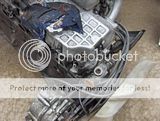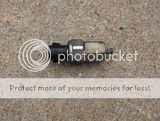The early block and head bolt knock sensors are listed by code and figure in this document
http://www.tomco-inc.com/Catalog/knock%20sensors.pdf
Page 222 shows the Fig 13 1/4"NPT thread sensor 29021. 29022, 29042
For most F150'S, Ford PN E7TZ12A699A or new number FOTZ12A699A
Standard Motor Products Part Number KS78
For Aussie X-flows from 1986 to the last XF Falcon Ute and Nissan Ute in early 1992, its E6RF 12A69BA, and is now a defuct part.Down here in Australasia, our big senosr company for Air Temperature Sensors,Coolant Temperature Sensors, Crank Angle Sensors ,Idle Air Control Motors, Knock Sensors, Map Sensors, Power Steering Switches and Throttle Position Switches is ACA Engine Management Solutions®
ACA Dont list it any more, but they do list the later EEC 5 sensors for most OHC 6's and US derived Mustang GT and Explorer GT40 V8'S. See page 50 (44 to 46 on the file, but listed 50)
http://www.mazdabg.com/ftp-uploads/MAZD ... alogue.pdf
The common E6RF 12A69BA sensor is the orange or black inserted item in one of
XFlow_Fairlane's posts

Other photos from Fordmods


They look similar. The Australian item is two wire, and is just a tell tale for 0 to 150 Hz knock. When its present, it sends 3 volts to the 60 pin EEC IV computer, just like the early EEC3 5.8's




